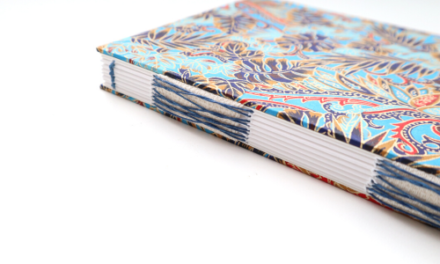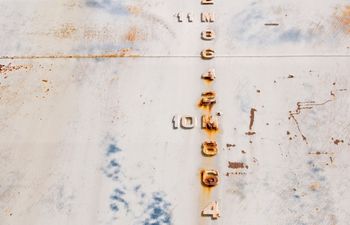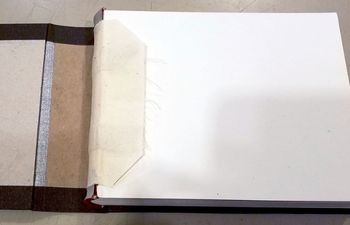The rule of grain direction is pretty important in bookbinding, so in this post I’ll show you two easy ways to find grain direction in paper.
I’m a visual learner, so I took lots of pictures.
Important note: only mass-produced (or, commercially made) papers will have a “grain direction.” I wrote about that here. So, if your paper is handmade, don’t worry about doing this!
#1. Fold Method
This is hands-down the easiest way to find grain direction in paper, so give it a try first. Get an 8-1/2 x 11″ piece of paper. Printer paper will work great if you have some.
- Start by holding the paper the long way with one hand on each end (first photo)
- Fold the paper away from you until your knuckles touch (second photo)
- Now, move your hands so one is holding the paper from the top while the other is holding the bottom.
- Again, fold the paper away from you until your knuckles touch (third photo)
- Ask yourself: Which direction felt easier? Which direction felt like it had a tiny pushback (resistance)?


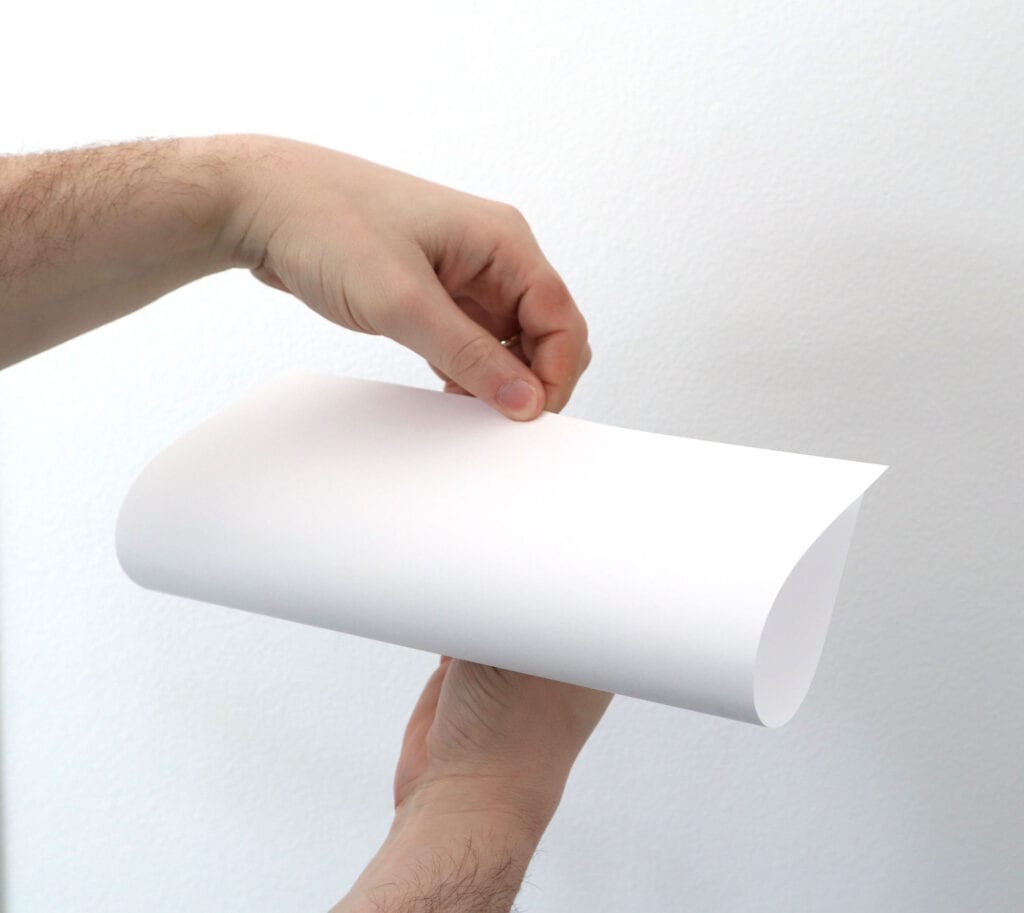
The paper will always fold easier with the grain.
Long vs. Short Grain
For my hubby, the second fold (photo #3) was the easiest. This shows the paper grain direction (below with the orange arrow) is across the longest side of the paper (the side that is 11″). This is called “long grain.” When grain runs across the shortest side of the paper, it’s called “short grain.”
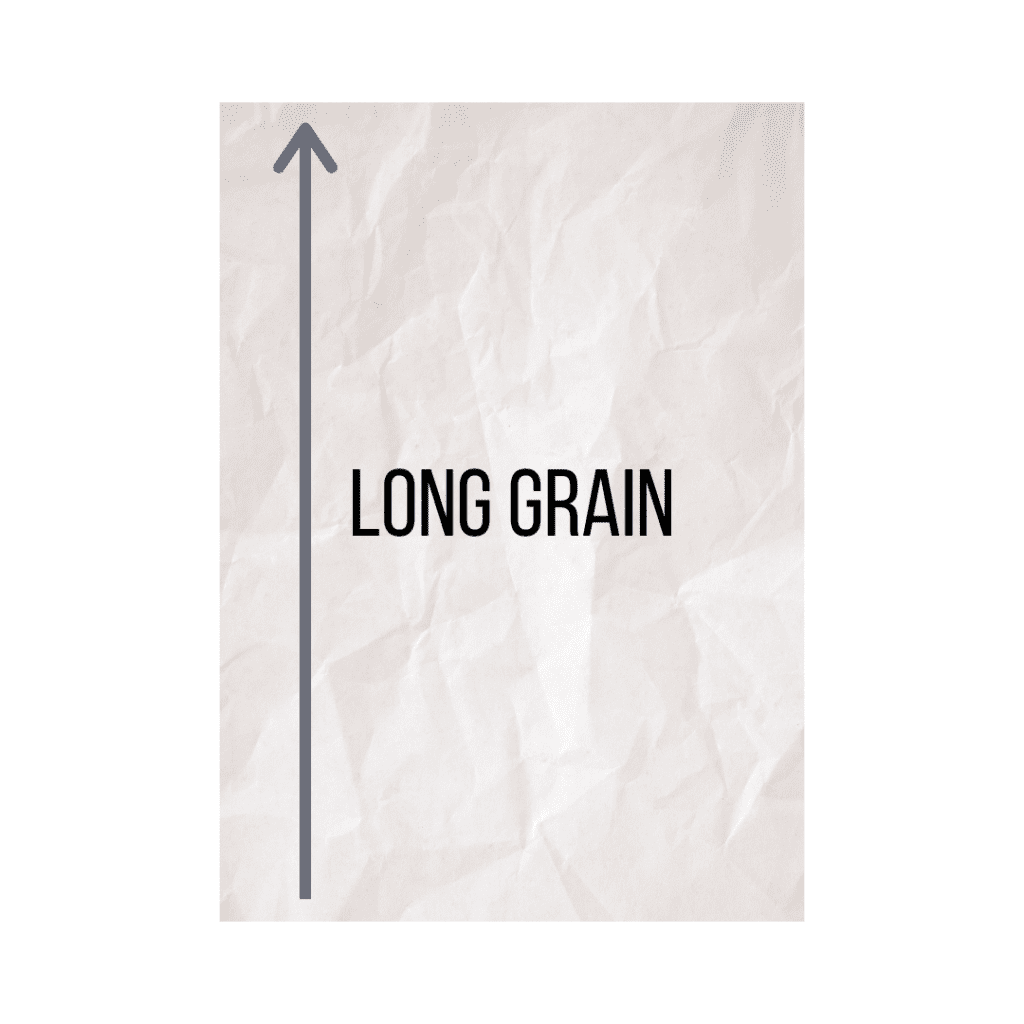

Below, we see photo #3 again with an orange arrow showing the Long grain direction:
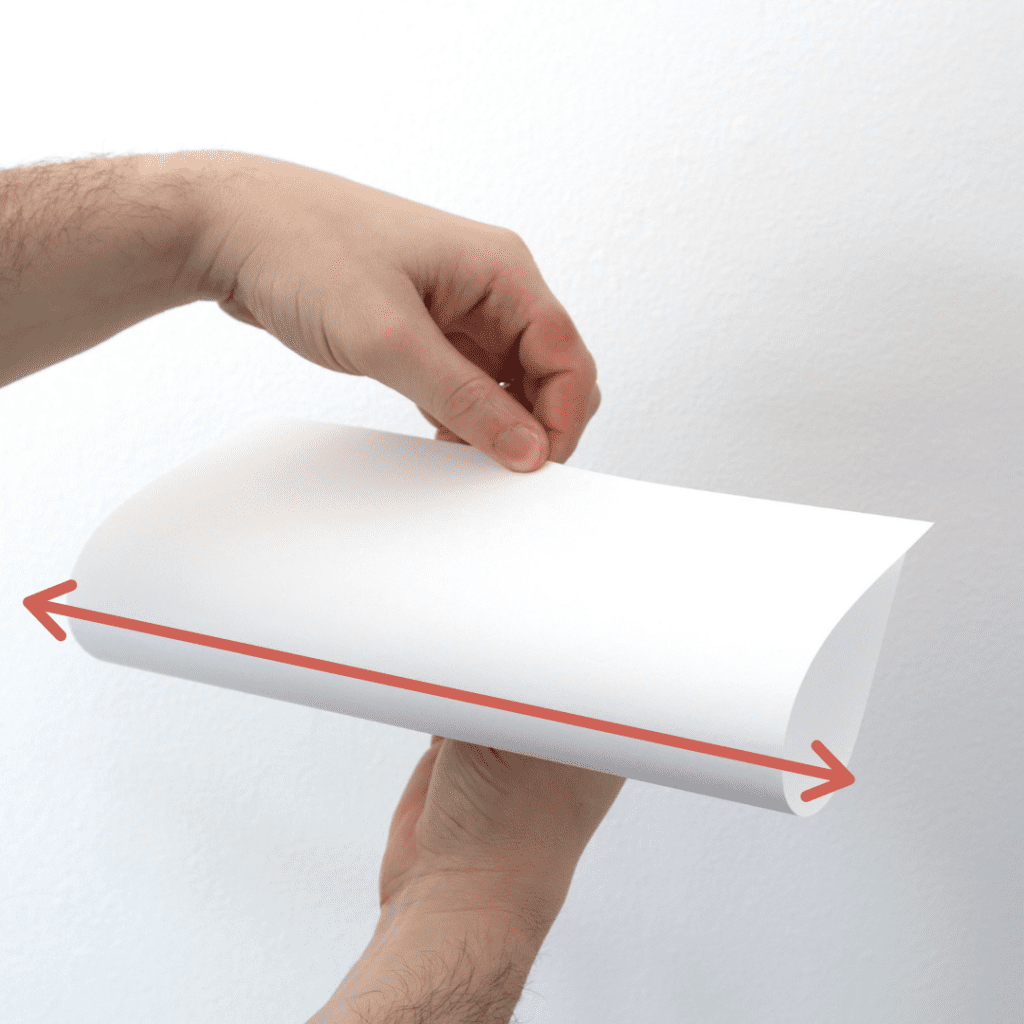
#2. Water Method
Some papers are either very fine or very thick, making it hard to find the resistance in a fold. For these, we can use the water method.
For this test, I asked my husband to choose three random sheets of paper. Without knowing which is which, I ran the water test.
- Try to test on a decent size (I like 4-1/4″ x 6″ if possible).
- Lay the paper on a flat surface (first photo)
- Using a spray bottle, apply a thin layer of water. You want it wet enough to absorb around 50%, but not enough to drench it.
- Wait for the paper to dry (second photo).
- As the paper dries, watch which direction the paper curls (third photo).
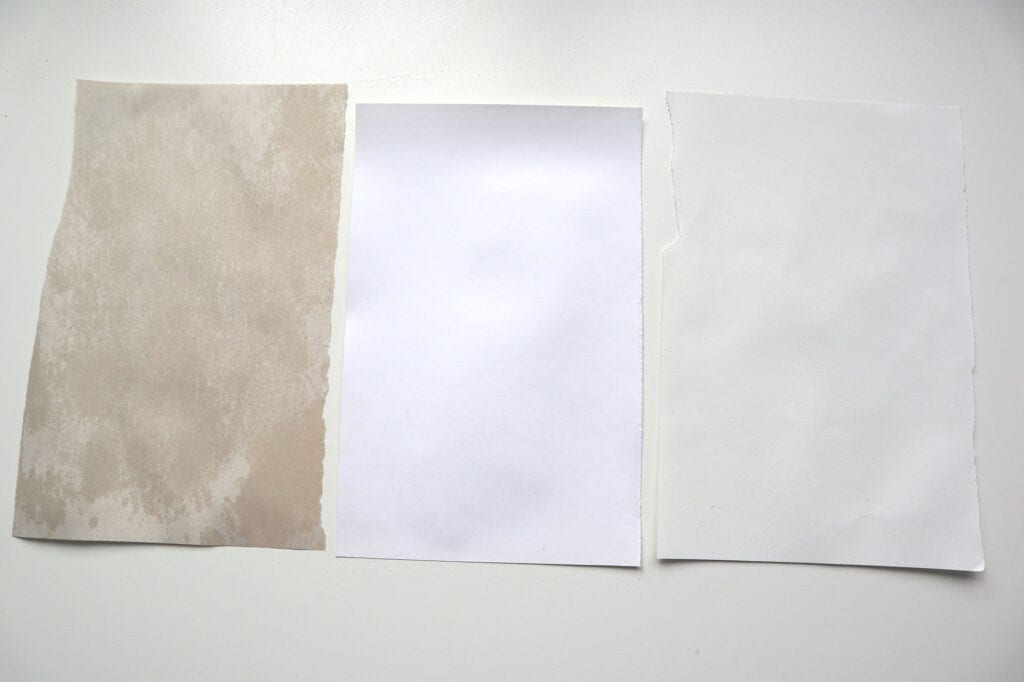
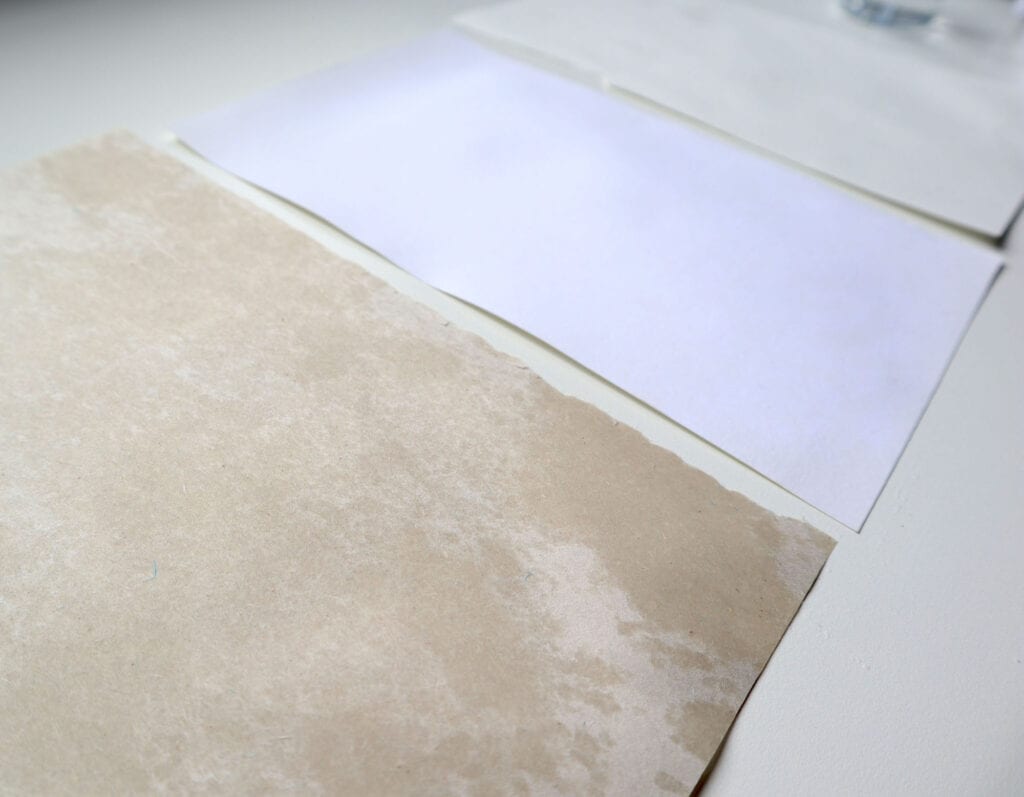
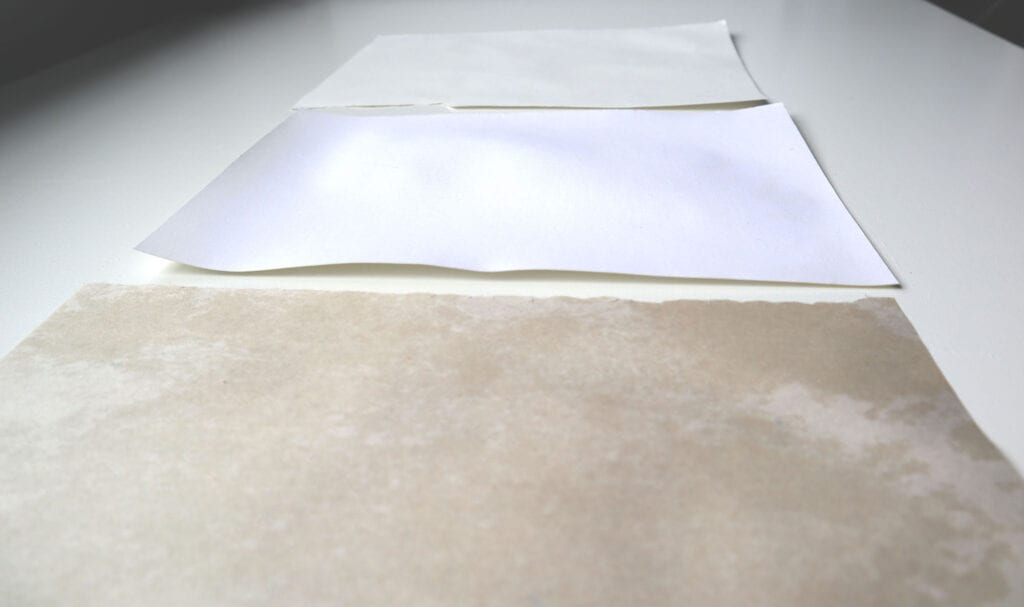
As the paper dries, it will curl with the grain. I like to think of this as “curling around the grain” like a big hug. I know, it may be cheesy, but whatever. I’m cheesy.
I’ll take you through the process using three images.
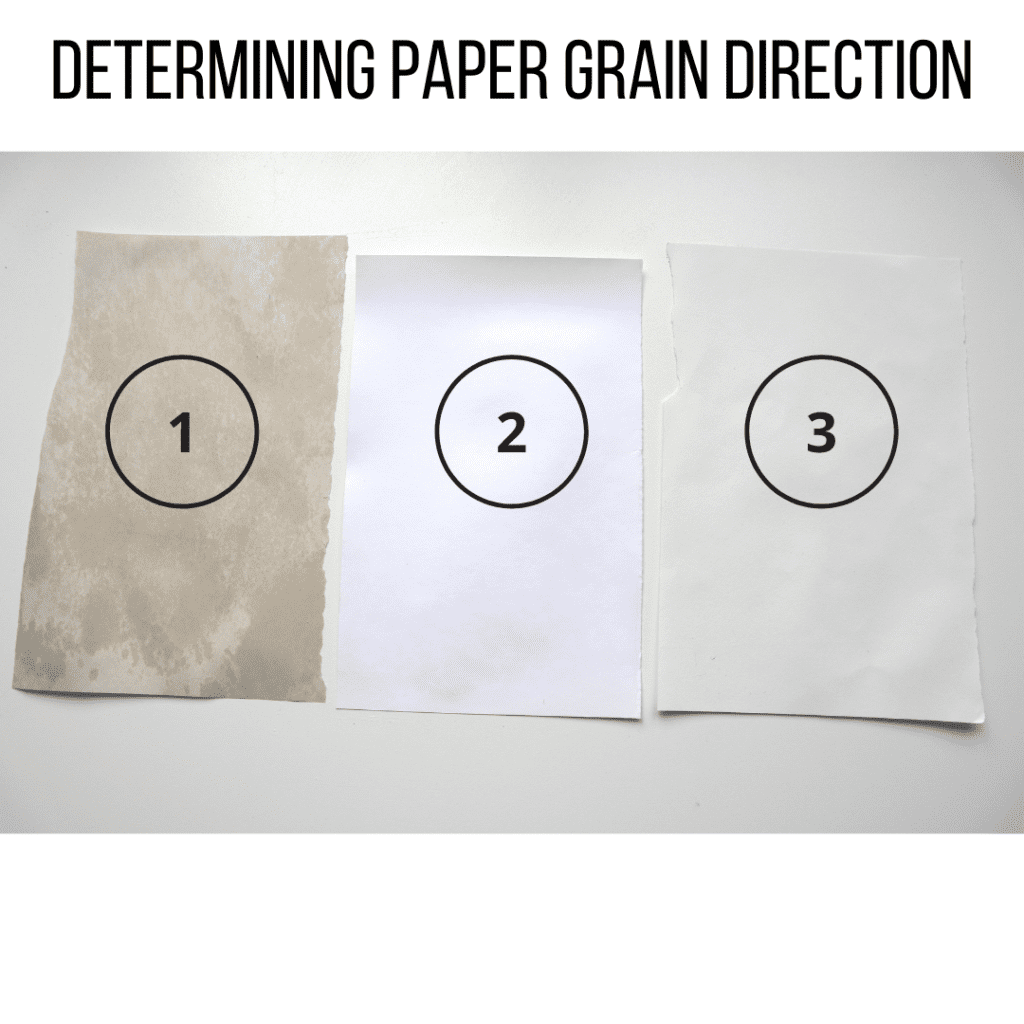
Right away, I found the grain direction of #2. See how the paper curls up at either end, as if it wants to wrap around the grain like rolling up a map? This tells me the piece has a short grain direction.

#3 was also easy to find because it lifted at each of the four corners but dipped in the middle. I drew an arrow to show you how the paper was curling. This center dip shows a long grain direction because it’s running along the longest side of the piece.
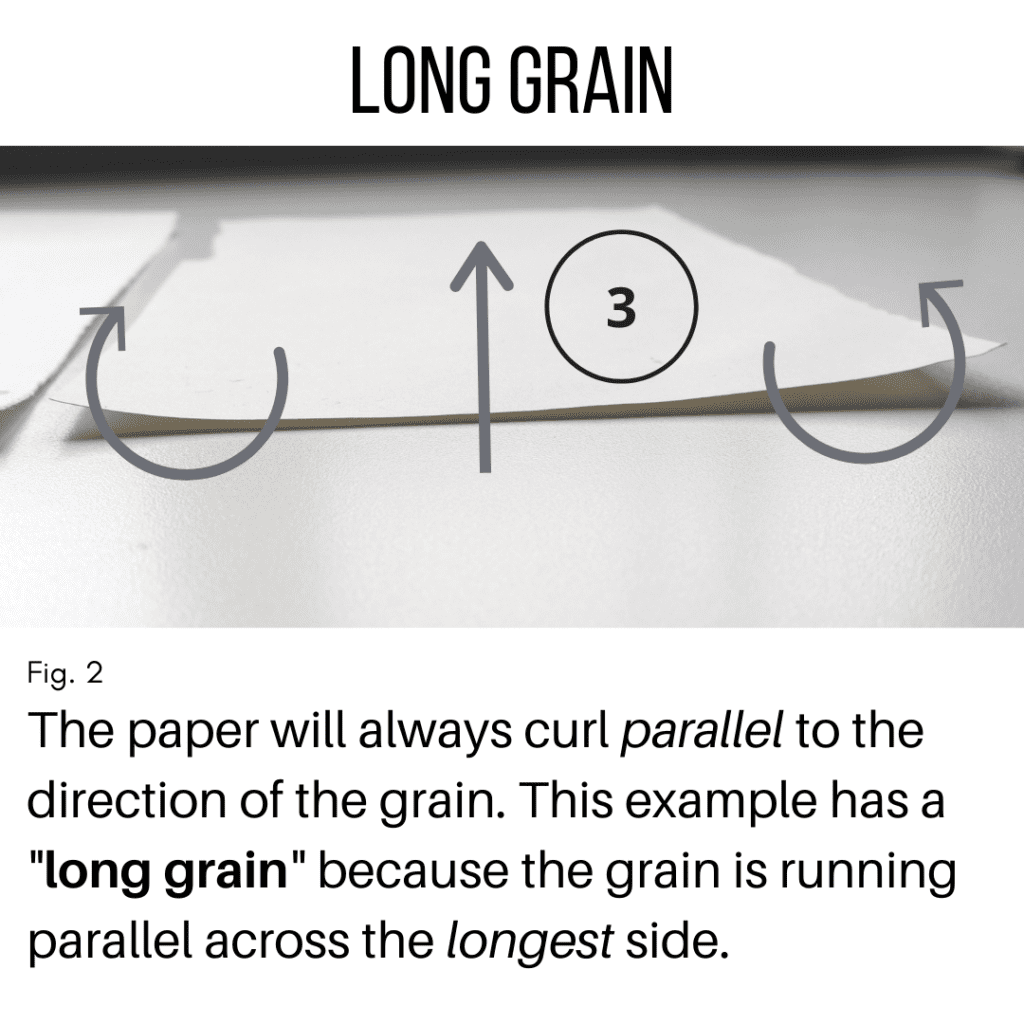
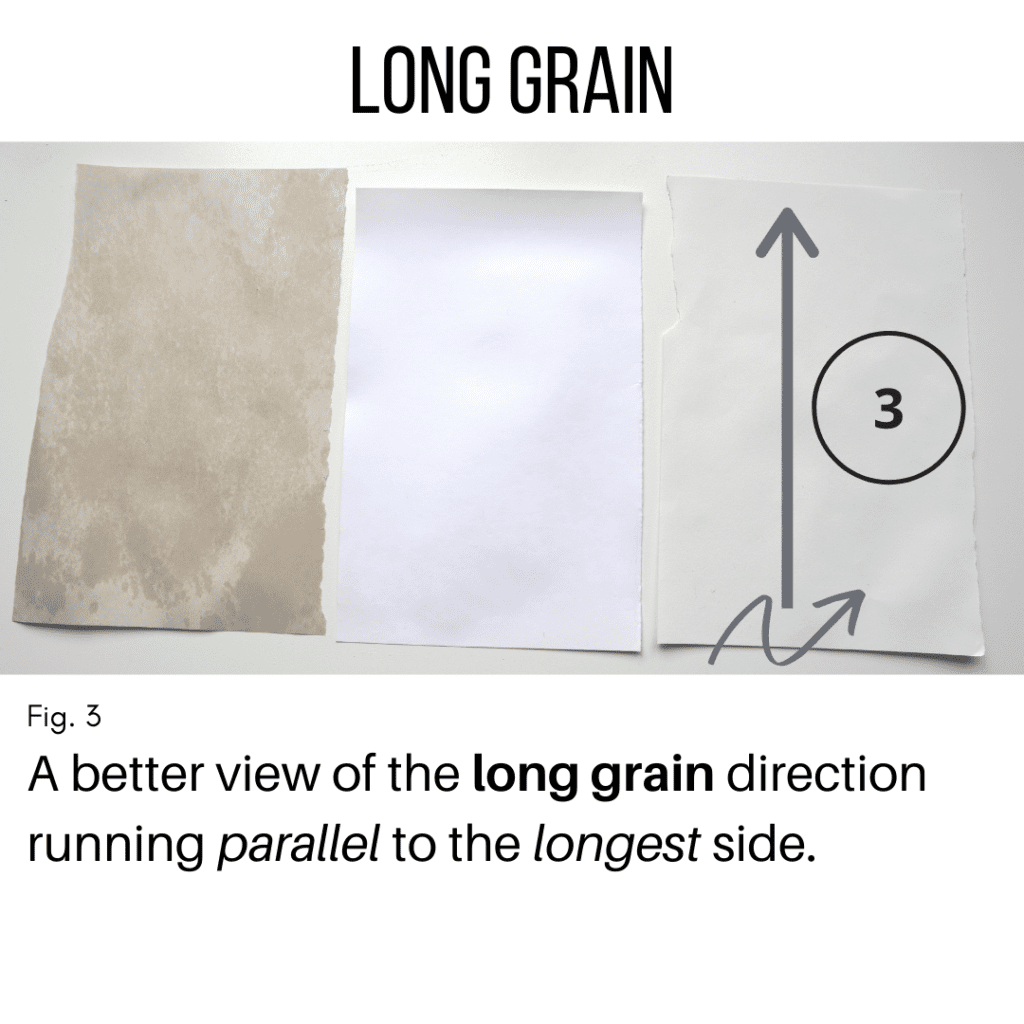
The final piece, #1, was a little harder. It’s a piece of newsprint paper, which is pretty thin. Thin paper can be finicky and fold up in random places, but it’s still possible to find the curl. Can you guess?
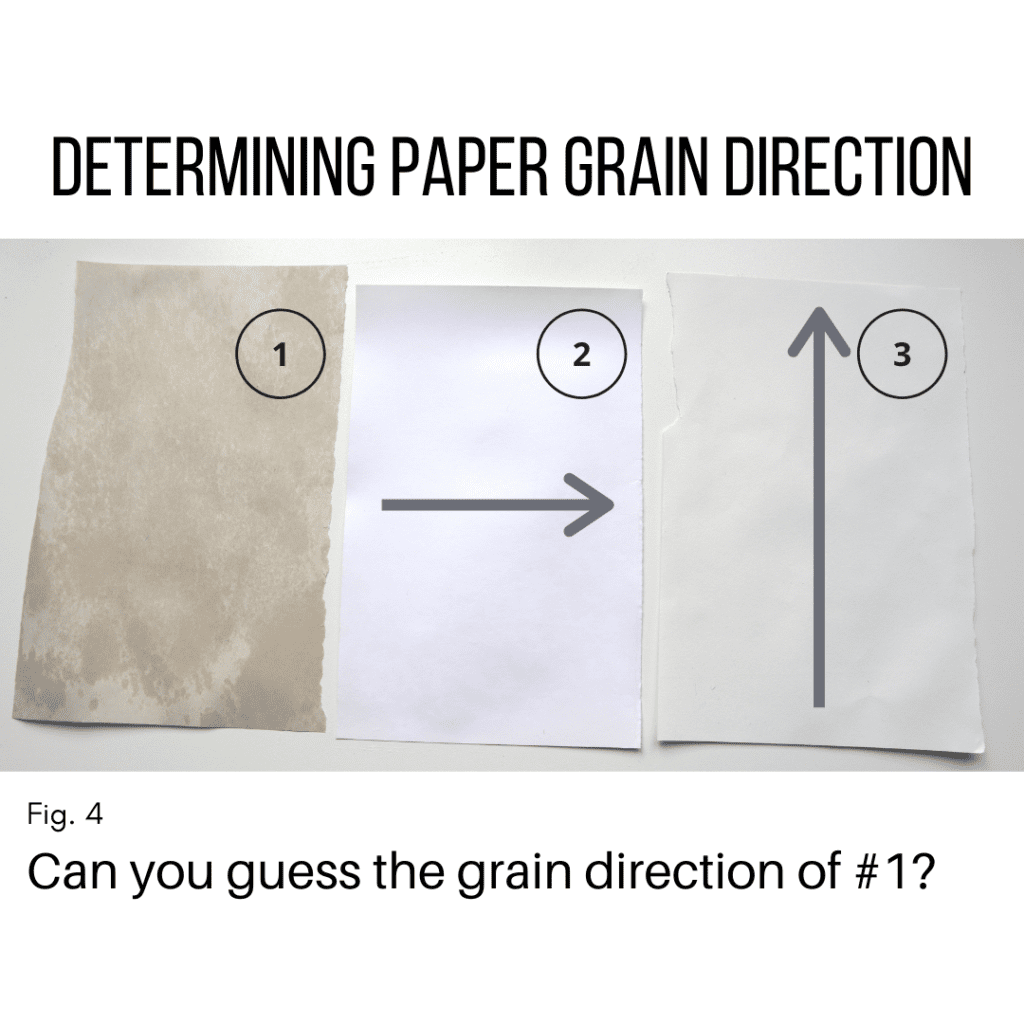
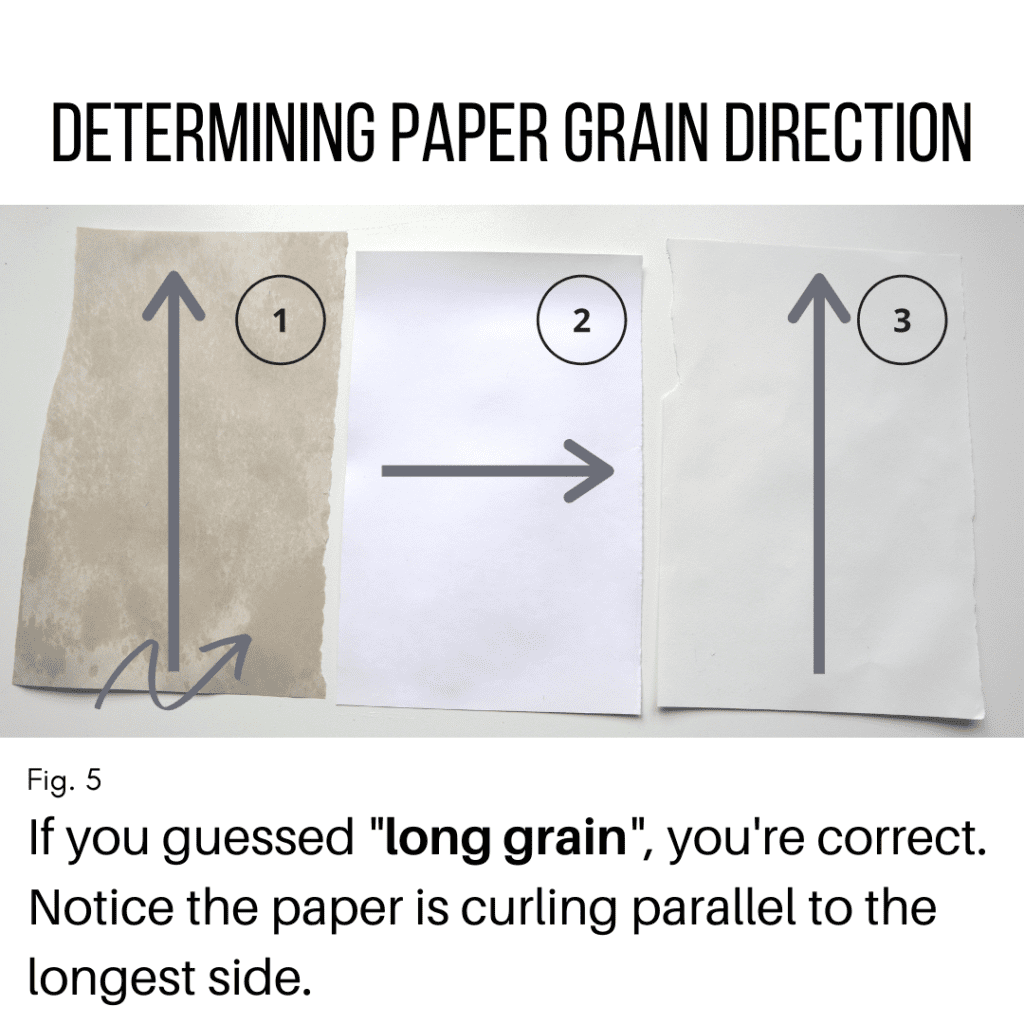
I drew an arrow to show you the dip in the center. That dip tells me it’s a long grain direction.
Short Grain in Bookbinding
Books are typically taller than they are wide. For this reason, bookbinders are always looking for paper that is wider than it is tall with a short grain direction (this lets us to fold that big sheet in half to create a section). Since long grain sheets are more common, it can be hard to find what we need. Lucky for us, paper companies help out by labeling the paper for us.
Finding the specified grain direction
Paper companies will usually list the grain direction in one of two ways:
- Underline the grain direction when listing paper size. Example: 18 x 20. Since 18 is the shortest side, this tells us the sheet is “short grain.”
- Listing the grain in words, such as “short” or “long” in the product description or printed on the package.
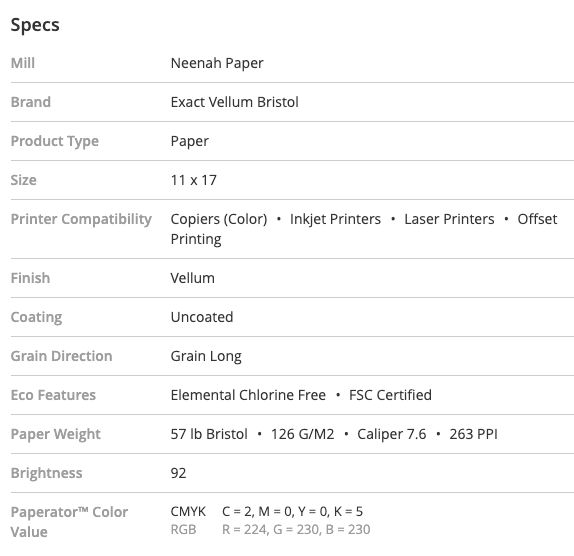
As you can see, grain direction is a kind of a big deal in paper. Just give yourself lots of chances to practice and don’t worry – sacrificing a few sheets of paper to the grain direction gods is normal and completely okay.
More bookbinding goodness
✨ What tools do I need to get started bookbinding?
- Bookbinding Tools & Supplies Quick Start Guide – learn all about book making tools, which to buy first & where to go online
- Pick up my popular Complete Starter Bookbinding Tools Kit – all the bookbinding essentials in one spot
🌟 Looking for a simple way to start making books?
Try a Complete Book Materials Kit. Each one has everything you need (+ tutorials & videos) to make a beautiful book without all the fuss.
Thank you for taking me along on your book making journey!
Misty

